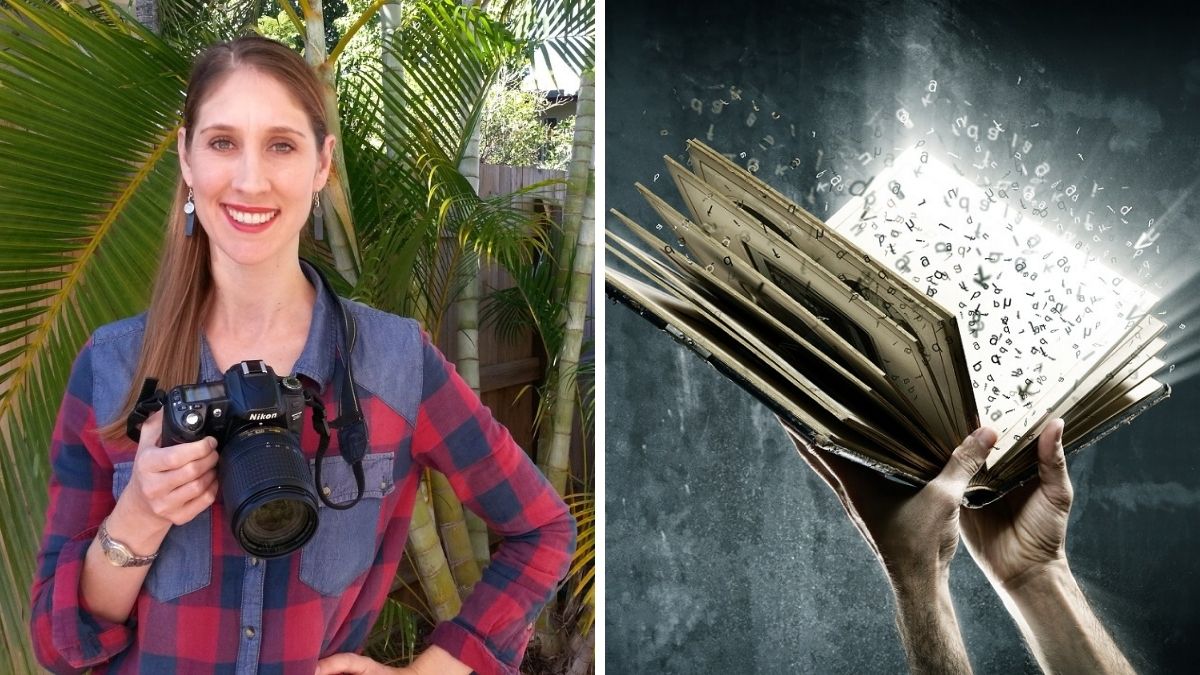
3 simple steps to deciding paperback vs hardcover + book trim sizes + types of paper
Getting ready to publish your book can feel amazing.
You are on top of that writing mountain that has taken you months, if not years to climb.
The end is in sight!
While you will be excited to finally hold your book in your hand there is one last step: publishing.
If you decide to hand write, home print or email your life story to family and friends – terrific!
But if you want to use a book printer, like I’m doing for my grandmother’s story, printing is one last learning curve you need to scale.
A printer does just that – prints.
They typically won’t guide you through all the different printing options from sizing to paper and cover type.
That’s all up to you to decide.
In this article I go over how to get your own book printed by highlighting some of the key printing terms, explaining what they mean and why you need to know them.
1 Trim size
The first step in how to get your own book printed starts with trim size.
This is the actual size of your book when printed.
Pull a book off a shelf and use a ruler to measure its height and width.
This is the trim size.
The trim size must match your book page layout.
Not sure what trim size to pick?
Look on your home bookshelf or head to the library or book store.
Browsing will help you decide a rough trim size you are comfortable with.
Remember the smaller the trim size the more pages and therefore more expensive the book could be to print.
‘On trend’ trim sizes are always changing but for argument sake common dimensions are:
- Memoir 5.25 x 8 inches (133 x 203mm)
- Non-Fiction 5.5 x 8.5 inches (140 x 216mm)
- Non-US markets A5 5.83 x 8.27 inches (148 x 210mm)
- See more trim sizes here.
Related article –Proofreading tips for revising and editing your writing
2 Paper
Print colour
Print colour is a key decision in how to get your own book printed.
Printers will ask if you want your book printed in black and white or colour.
Black and white means all pages, even photos, are black and white.
Because you use less inks black and white is cheaper.
A full-colour book means all pages are printed in colour, even text pages that appear black and white.
This is terrific if you have colour photos or illustrations.
However, colour printing will be more expensive than black and white.
Paper type
Next we come to deciding paper type.
Here you are choosing what type of white paper you want for the pages of your book.
White colours range from soft ‘cream’ white to super ‘glossy’ white.
The brighter the white the more processed and costly the paper.
Softer white suits long reads because it is easy on the eyes.
Whereas harsh white makes colour images standout.
Paper weight
The number of photos in your book will usually help you determine the paper weight (or quality) you need.
Black and white and colour books can typically use a lighter, cheaper paper such as 50lb/ 74gsm (grams per square metre).
However, for premium and extra-vivid colour you will need heavier and more costly paper 70lb/ 104gsm.
Related article – How to write a book title: Catchy headlines and good book titles
3 Cover type and how to get your own book printed
A final decision on how to get your own book printed comes down to covers: paperback or hardcover.
This will depend on your personal preference and budget.
Paperback
Paperbacks are the most commonly printed books.
This is because they are portable, easy to hold and cost friendly.
Pages are glued to a laminated paper cover.
Paperback covers can be shiny gloss or soft matte.
Hardcover
Hardcover books are more durable and deluxe than paperback.
They come with or without a dust jacket, which is a removable paper cover with folding flaps.
Pages are stitched to a cardboard cover.
Cardboard covers are traditionally covered in cloth binding (fabric) with embossed writing.
However, cardboard covers can also be covered in case binding (laminated paper) with a cover image.
Related article –Book covers: How to create a memorable cover design
How to get your own book printed if it is short
If you have a book under 50 pages go for saddle stitch.
Pages are bound with staples instead of glue.
This will be much cheaper than other options.
Final Say: How to get your own book printed
Taking your book to the printers is an amazing achievement.
You have come so far preparing a final draft!
But before printing there are still a few things to organise and decide: book trim size; paper colour, type and weight; and paperback or hardcover.
Investing time to understand and decide how to get your own book printed will save you much confusion, energy and money.
And of course your finished book will look and feel amazing.
Happy writing!
Free gift!
Need help getting started interviewing and writing a loved one’s life story? Get free sections to the Your Family Stories System for free. Sign up here or fill in the form below.
Your say
I’d love to hear what your printed book looks like. Or what successes did you have deciding how to get your own book printed? Send me an email (with a picture!) or leave a reply in the comments section at the end of this article.
Get in touch
Have you hit a roadblock planning, writing or finishing your autobiography? Let me know here so I can help!
Don’t miss an article
Sign up here or fill in the form below to get instant notifications when new material is published.
This article first appeared on the website Forever Young Autobiographies.com.

